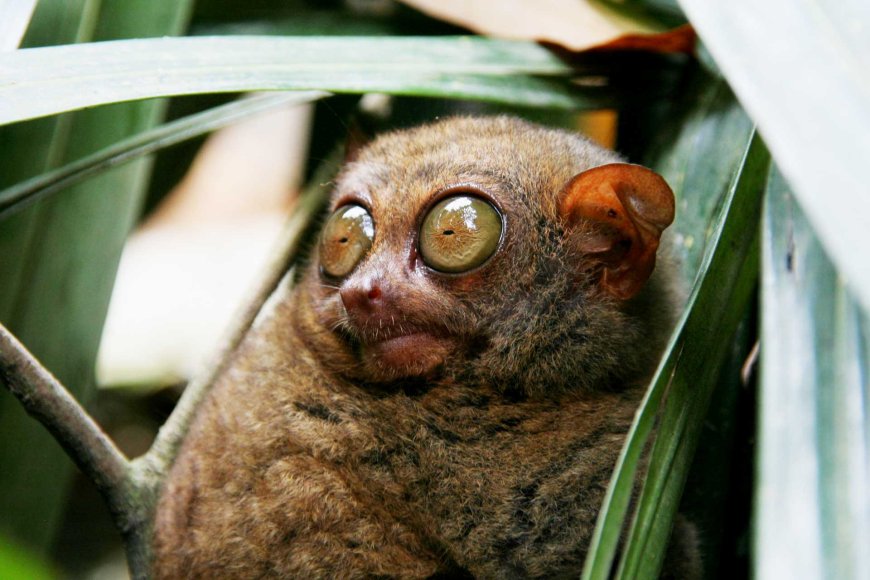providencemarianwood.org – Tarsiers, small nocturnal primates with strikingly large eyes and nimble movements, are native to Southeast Asia. Known for their unique appearance and enigmatic behavior, these elusive creatures have fascinated scientists and nature enthusiasts for centuries. This article explores the intriguing characteristics, habitat, and conservation concerns surrounding tarsiers.
Distinctive Physical Features
Tarsiers are easily recognized by their oversized eyes, which are proportionately the largest of any mammal in relation to body size. Each eye is as large as the tarsier’s brain, allowing them excellent night vision, a vital adaptation for their nocturnal lifestyle. Their small bodies range between 4 to 6 inches in length, with tails that are often twice as long as their bodies, used for balance as they leap through the forest. Their elongated fingers and toes, tipped with adhesive pads, help them grip tree branches with ease.
Nocturnal Behavior and Hunting
Tarsiers are strictly nocturnal hunters, using their extraordinary vision and hearing to detect prey in the dark. Unlike most primates, they are carnivorous, feeding on insects, small birds, lizards, and even bats. Tarsiers are known for their agility and precision, often leaping from one tree to another in a single bound to catch prey. Their ability to rotate their heads almost 180 degrees allows them to spot movement all around them, similar to owls.
Social Structure and Communication
Tarsiers tend to be solitary or live in small family groups, usually consisting of a male, female, and their offspring. They communicate primarily through high-pitched vocalizations, many of which are beyond the range of human hearing. Scent marking is another important form of communication, especially for territorial purposes. Despite their generally solitary nature, tarsiers display strong bonds between mates and their offspring, with parental care playing an important role in their survival.
Unique Reproductive Traits
Female tarsiers have a relatively long gestation period of about six months, typically giving birth to a single offspring. Newborns are born with open eyes and are able to cling to their mothers almost immediately, a necessary adaptation for arboreal life. The young tarsiers are nursed for about two months but start to explore their environment shortly after birth.
Habitat and Distribution
Tarsiers are found in the forests of Southeast Asia, including countries such as the Philippines, Borneo, and Sumatra. They primarily inhabit tropical rainforests, mangroves, and dense vegetation, preferring areas with thick tree canopies where they can move about undetected. Tarsiers are highly adapted to life in the trees, rarely coming down to the forest floor. Their nocturnal and arboreal habits help them avoid many predators.
Conservation Status and Threats
Many species of tarsiers are listed as vulnerable or endangered, largely due to habitat loss. Deforestation, land conversion for agriculture, and urban development are major threats to their survival. Additionally, tarsiers are sometimes captured for the illegal pet trade or tourist attractions, despite being highly sensitive to captivity. Stress from confinement can lead to death, as these delicate primates require specific environmental conditions and the freedom to move at night.
Conservation efforts are crucial for tarsier populations. Organizations are working to establish protected areas, promote sustainable land use practices, and educate local communities about the importance of tarsiers in the ecosystem. Ecotourism, when done responsibly, also plays a role in raising awareness about these unique primates.
Ecological Importance
Tarsiers play an important role in controlling insect populations, particularly those that are considered pests to agriculture. Their presence helps maintain a balanced ecosystem, as they occupy a specific niche as nocturnal insectivores. In addition, their feeding habits indirectly benefit plant life by reducing the number of herbivorous insects that can damage vegetation.
Conclusion
Tarsiers are among the most fascinating primates, with their large eyes, nimble movements, and solitary nocturnal lifestyle. However, they face significant conservation challenges due to habitat destruction and human interference. Protecting tarsiers is not only important for preserving this unique species but also for maintaining the health of the ecosystems they inhabit. By supporting conservation efforts, we can help ensure that tarsiers continue to thrive in their natural environments.
